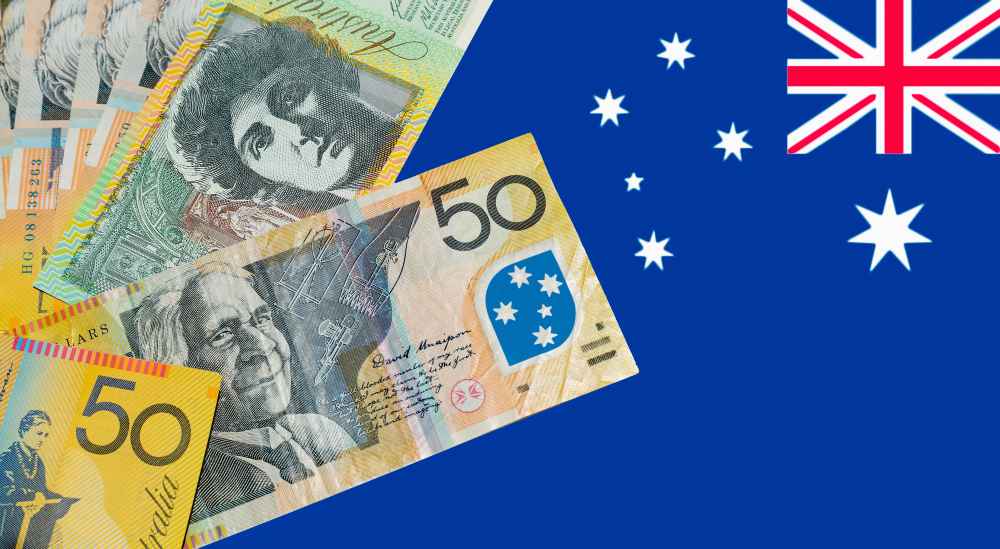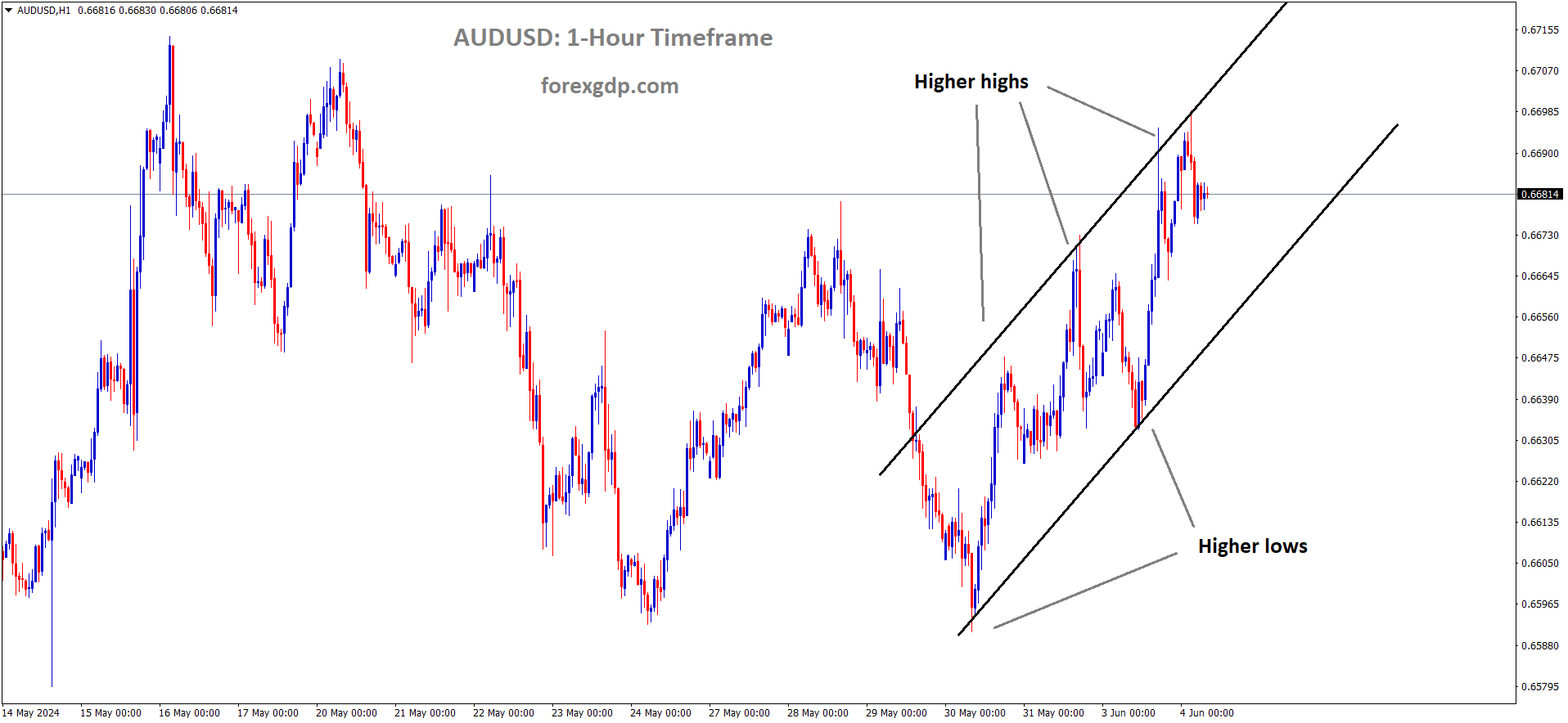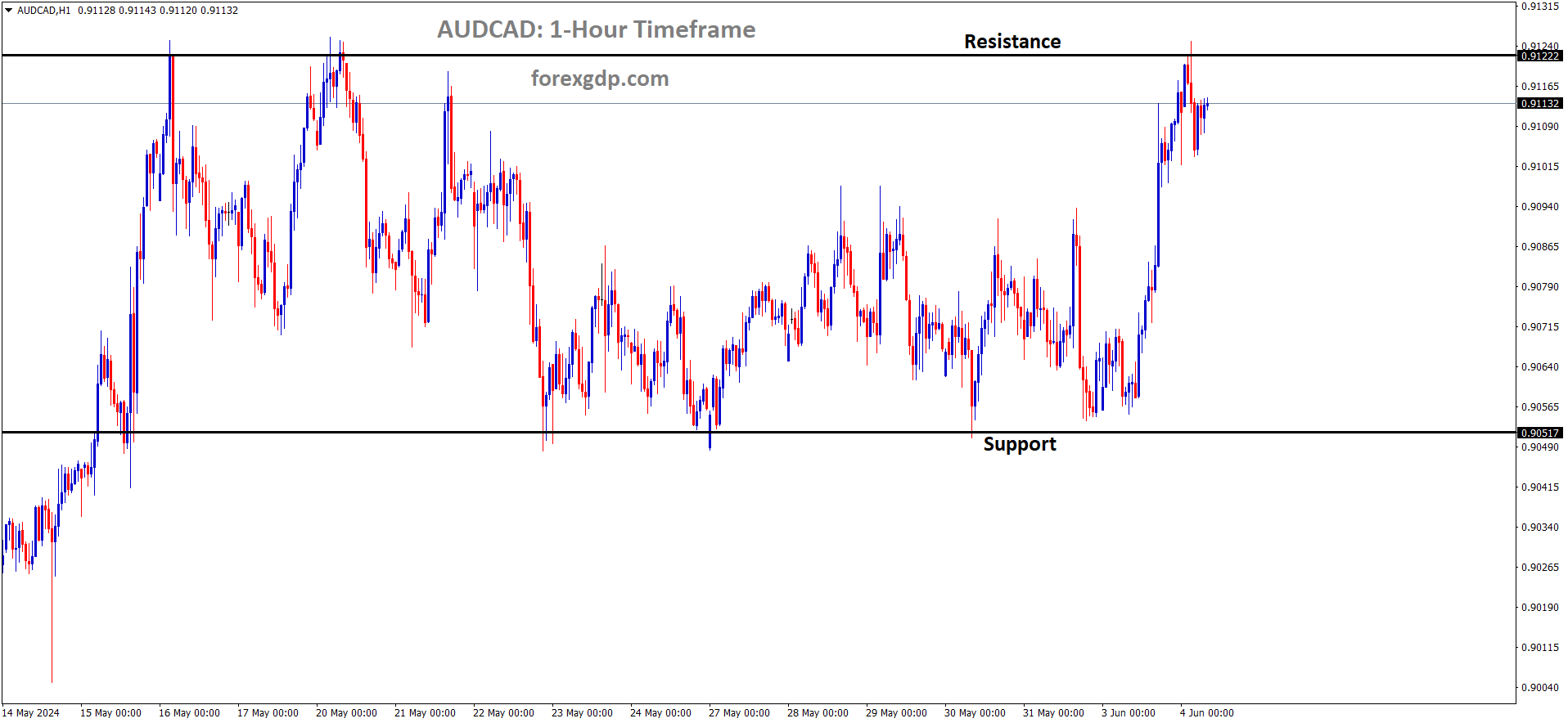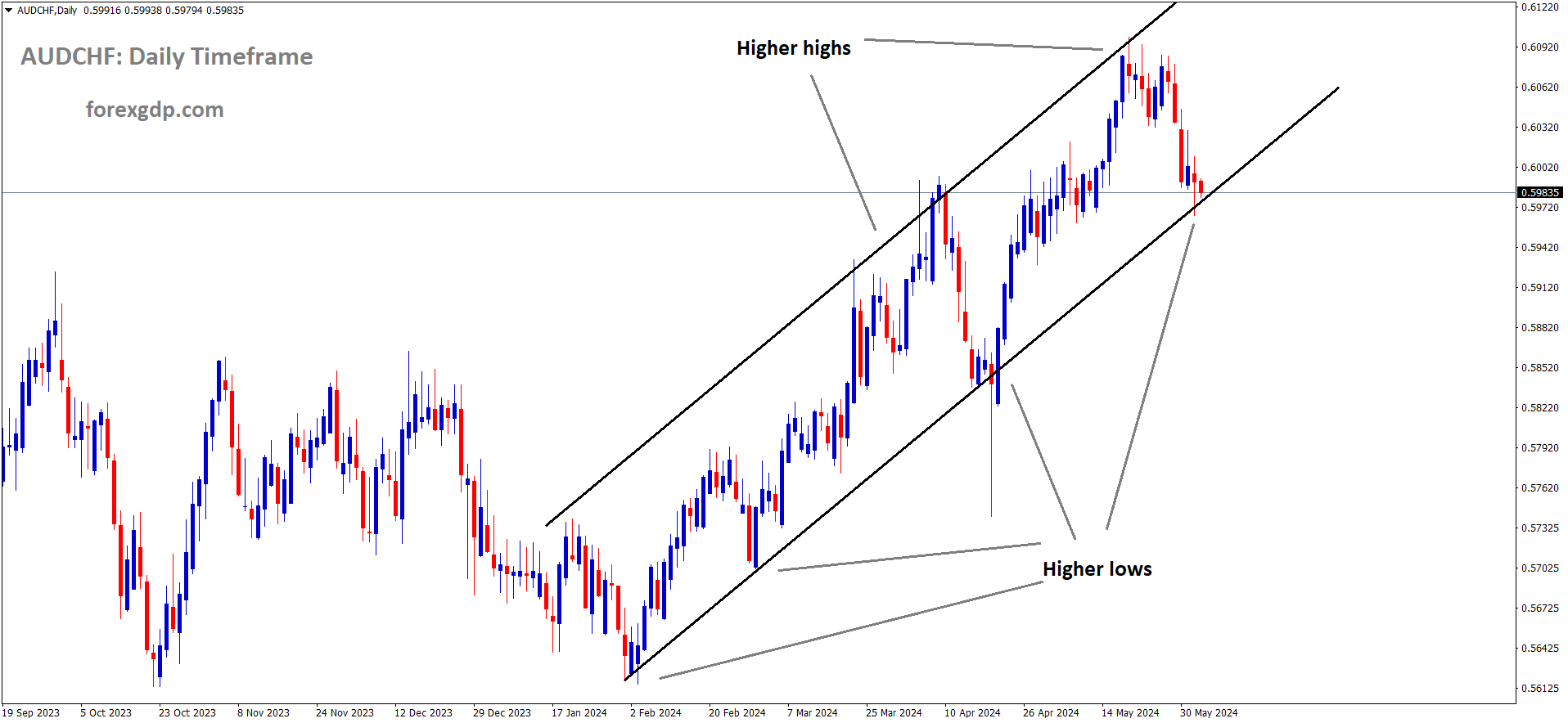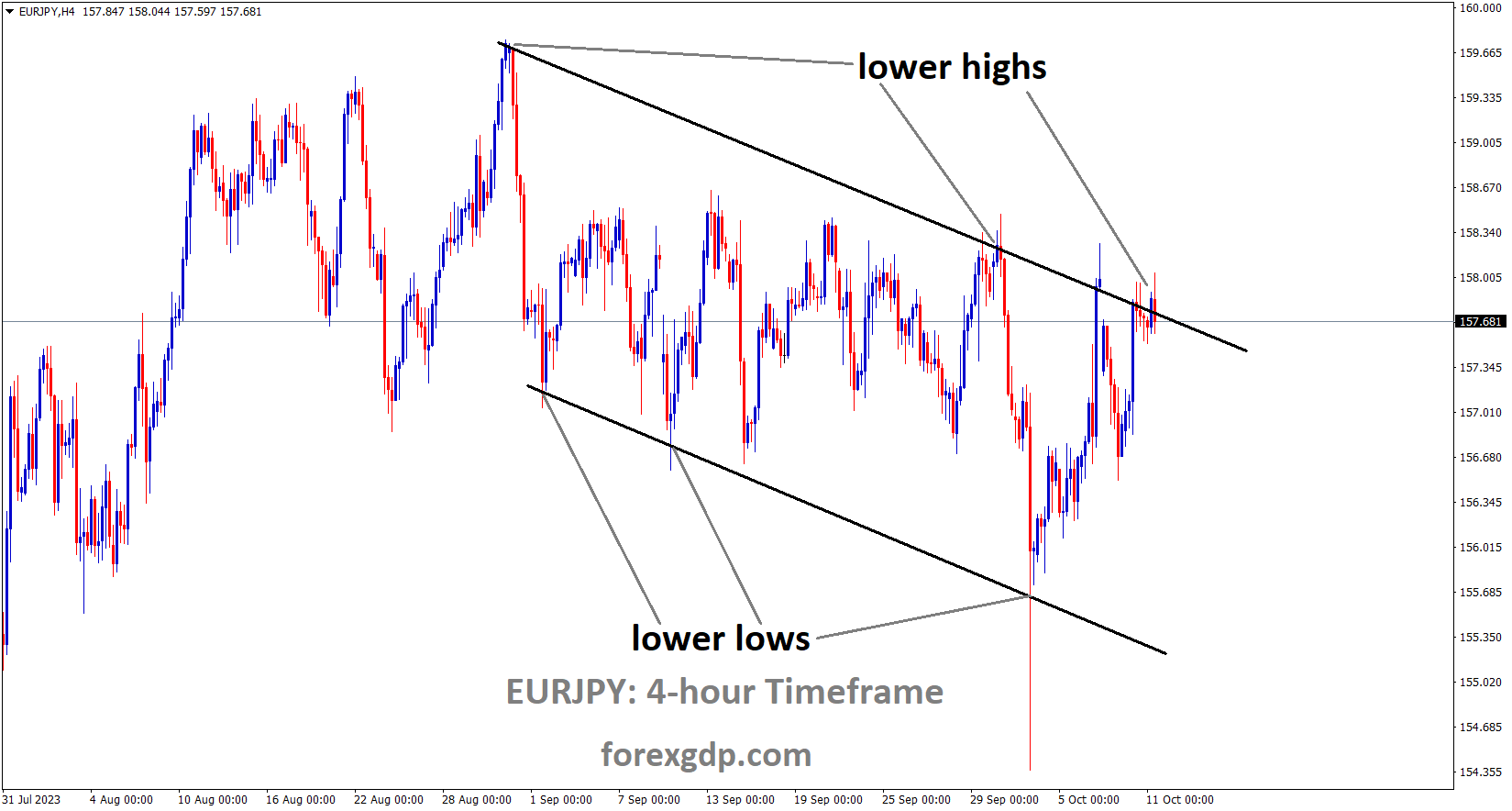AUD: Australian Dollar Drops on Unexpected Current Account Deficit
The Australian Current Account Deficit shows -A$4.9 Billion from A$2.7 Billion Surplus in the previous quarter and A$ 5.9 Billion Surplus is expected in Q1. The Australian economy faces trouble in the exports of Coal and Iron Ore Production, So Exports data fell by 1.5% in Q1 and Imports data grew by 4.5% in the Q1, The Australian Dollar little down after the data printed today.
AUDUSD is moving in Ascending channel and market has fallen from the higher high area of the channel
The Australian Dollar (AUD) halted its three-day winning streak on Tuesday, likely due to Australia’s unexpected current account deficit of A$ 4.9 billion (USD 3.2 billion) in the first quarter. This shift from a downwardly revised surplus of A$ 2.7 billion in the previous quarter missed market expectations of an A$ 5.9 billion surplus.
In a media release from the Australian Bureau of Statistics (ABS), Grace Kim, ABS head of International Statistics, stated: “The current account deficit reflects a smaller trade surplus, driven by a rise in the imports of goods, while the net primary income deficit increased.” Imports of goods rose by 4.5% in Q1, driven by consumption goods, while exports of goods fell by 1.5%, reflecting reduced domestic coal and iron ore production.
The US Dollar (USD) edged higher as US Treasury yields improved, attributed to prevailing risk aversion. However, the Greenback may face challenges as Federal Reserve (Fed) officials indicated last week that the central bank could achieve its 2% annual inflation target without further interest rate hikes.
Investors are likely awaiting Australia’s Gross Domestic Product (GDP) data for the first quarter and China’s Caixin Services PMI for May, both set to be released on Wednesday. In the US, attention will be paid to the ADP Employment Change and ISM Services PMI reports.
Daily Digest Market Movers:
– Australian Dollar depreciates due to risk aversion
– The ISM Manufacturing PMI unexpectedly dropped to 48.7 in May, down from April’s reading of 49.2 and below the forecast of 49.6. The US manufacturing sector experienced its second consecutive month of contraction, marking the 18th in the last 19 months.
– Australia’s Judo Bank Manufacturing PMI, released on Monday, edged up slightly to 49.7 in May from 49.6 in April, marking the fourth consecutive month of declining conditions in the manufacturing sector.
AUDCAD is moving in box pattern and market has reached resistance area of the pattern
– On Monday, the Caixin China Manufacturing PMI rose to 51.7 in May from 51.4 in April, marking the seventh consecutive month of expansion in factory activity and surpassing estimates of 51.5. Friday’s NBS PMI data showed that manufacturing activity fell to 49.5 in May from 50.4 in April, missing the market consensus of an increase to 50.5. Meanwhile, the Non-Manufacturing PMI declined to 51.1 from the previous reading of 51.2, falling short of the estimated 51.5.
– Last week, Atlanta Fed President Raphael Bostic remarked in an interview with Fox Business that he doesn’t believe further rate hikes should be required to reach the Fed’s 2% annual inflation target. Additionally, New York Fed President John Williams stated that inflation is still too high but should moderate over the second half of 2024. Williams doesn’t feel the urgency to act on monetary policy, per Reuters.
– According to a Bloomberg report, RBA Assistant Governor Sarah Hunter said at a conference in Sydney on Thursday that “inflationary pressures” are the key issue. “We’re very mindful of that.” Hunter also stated that the RBA Board is concerned about inflation remaining above the target range of 1%-3%, suggesting persistent inflationary pressure. Wages growth appears to be near its peak.
AUD: Australia’s Current Account Drops $7.6B to $4.9B Deficit
The Australian current account shifted to a deficit of A$4.9 billion in the first quarter of 2024, a significant change from the A$2.7 billion surplus recorded in the previous quarter. Market expectations had predicted a surplus of A$5.9 billion for this period.
The Australian economy has been struggling with decreased exports of coal and iron ore. As a result, export data showed a decline of 1.5% in the first quarter. In contrast, imports grew by 4.5% during the same period, driven by increased consumption goods and essential items like medicines, clothing, and footwear.
Following the release of this data, the Australian Dollar experienced a slight decline.
Australia’s current account balance fell by $7.6 billion to a deficit of $4.9 billion in the March quarter of 2024 (seasonally adjusted, current prices), according to figures released today by the Australian Bureau of Statistics (ABS).
Grace Kim, ABS head of International Statistics, stated: “The current account deficit reflects a smaller trade surplus, driven by a rise in the imports of goods, while the net primary income deficit increased.”
The balance on goods and services decreased by $6.1 billion to $17.8 billion, while the net primary income deficit rose by $1.5 billion to $22.3 billion.
AUDCHF is moving in Ascending channel and market has reached higher low area of the channel
Australia’s terms of trade rose by 0.2 percent but were down 7.3 percent year-over-year. The quarterly rise in the terms of trade reflects a steeper fall in import prices (-2.0 percent) compared to the fall in export prices (-1.8 percent).
“The prices of goods exports fell, led by metal ores prices, after a rise in the December quarter. The price of exported goods was 10.3 percent lower compared to this time last year,” Ms. Kim said.
Imports of goods rose by 4.5 percent, driven by consumption goods, reflecting a broad increase in the global supply of items like medicines, clothing, and footwear. Australia also imported more fertilizers after weather events impacted domestic supply.
Imports of services fell for the second consecutive quarter (-1.8 percent), as Australians spent less on overseas travel and continued to visit closer international destinations.
Exports of goods fell by 1.5 percent, reflecting reduced domestic production of coal and iron ore. Exports of other rural goods also declined, driven by cotton due to low harvest yields.
Exports of services rose by 0.6 percent, led by travel services as more tourists visited Australia, coinciding with large music events like Taylor Swift and Pink concerts. However, a smaller-than-average rise in students coming to Australia to study partly offset the tourism boost.
The primary income deficit ($22.3 billion) widened for only the second time since the June quarter of 2022. A rise in primary income debits (outflows) drove this result, due to higher profits on foreign direct investment, mainly in liquid natural gas (LNG) and industrial real estate. Higher LNG prices contributed to larger first-quarter profits.
The financial account had a surplus of $8.3 billion, driven by net inflows of equity (+$15.3 billion) and partly offset by net outflows of debt (-$7.0 billion).
Australia’s net international investment liability position of $730.3 billion narrowed to its lowest level since the June quarter of 2009, a drop of $103.9 billion. The rise in Australia’s foreign assets outpaced the rise in foreign liabilities.
“The narrowing of Australia’s international investment liability position reflected a large rise in Australia’s foreign equity assets as Australian investors benefitted from rising values in international share markets,” Ms. Kim added.
Australia’s net foreign equity asset position rose by $131.8 billion to $505.5 billion, its largest on record.
Australia’s net foreign debt liability position grew by $27.9 billion to $1,235.7 billion, reflecting the depreciation of the Australian dollar.
The $5.5 billion fall in net trade (seasonally adjusted, chain volume measure) is expected to detract 0.9 percentage points from the March quarter 2024 Gross Domestic Product (GDP) movement.
Don’t trade all the time, trade forex only at the confirmed trade setups
Get more confirmed trade signals at premium or supreme – Click here to get more signals , 2200%, 800% growth in Real Live USD trading account of our users – click here to see , or If you want to get FREE Trial signals, You can Join FREE Signals Now!

